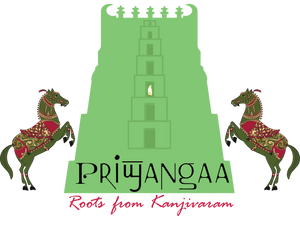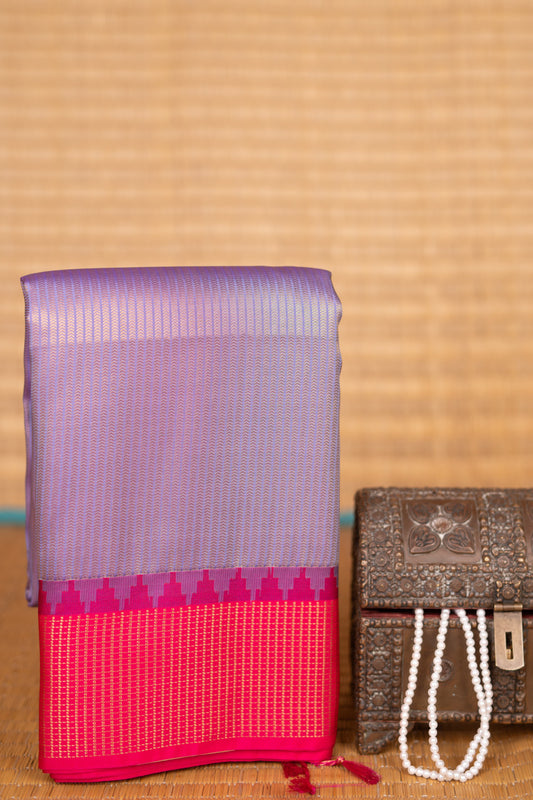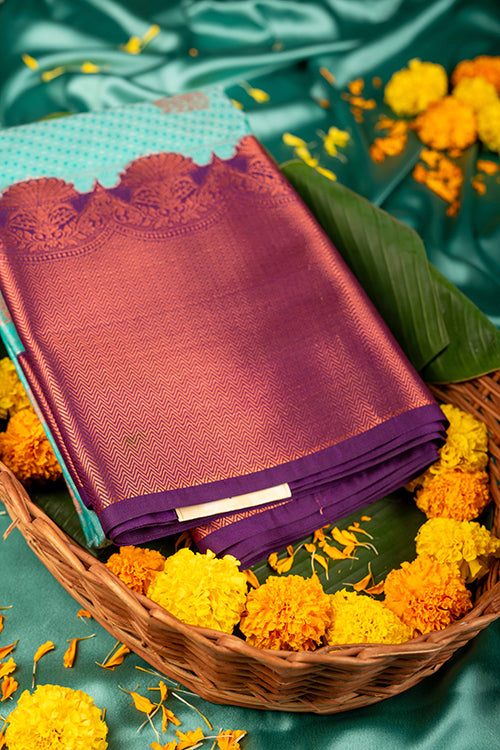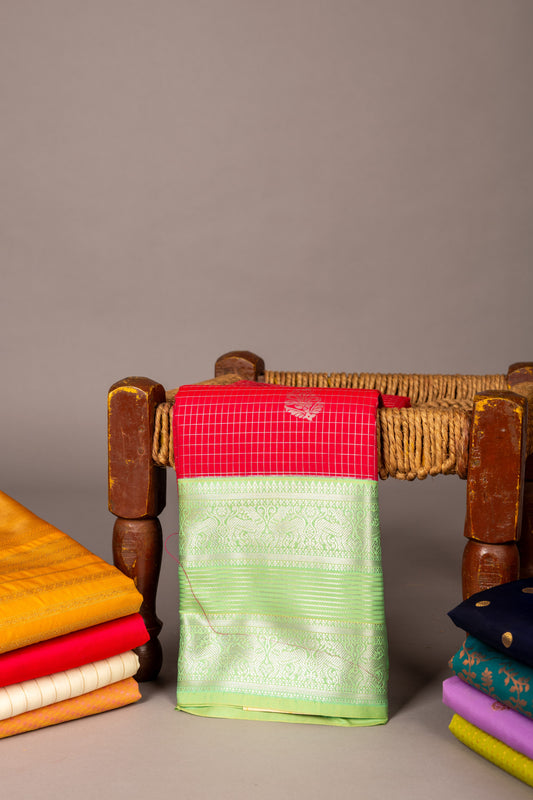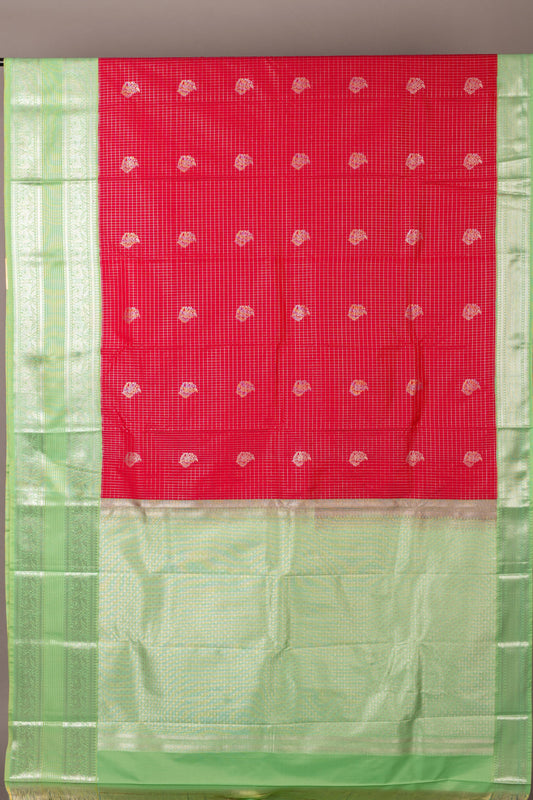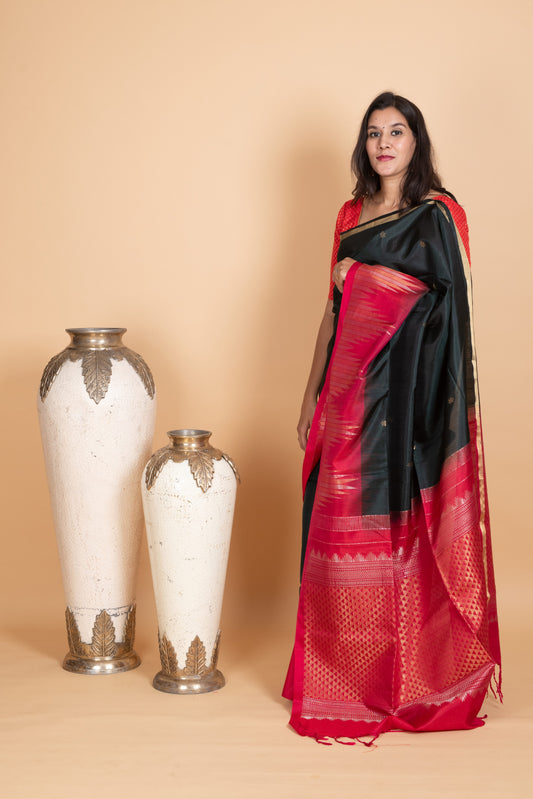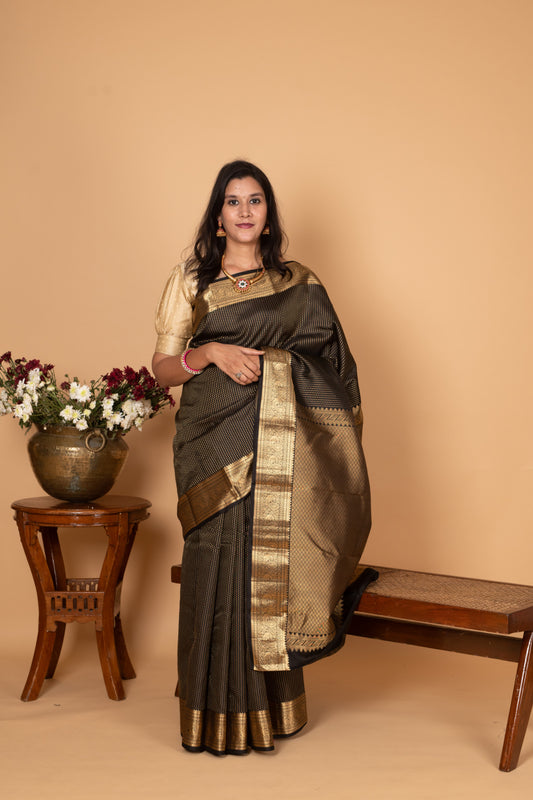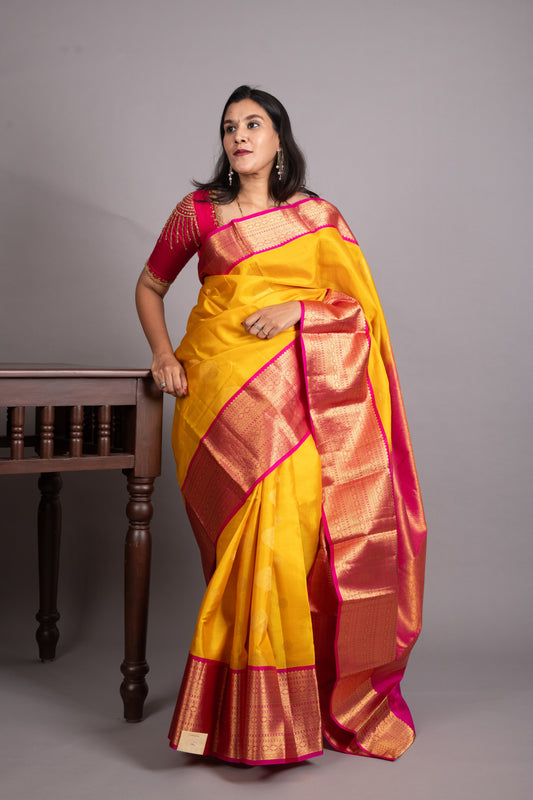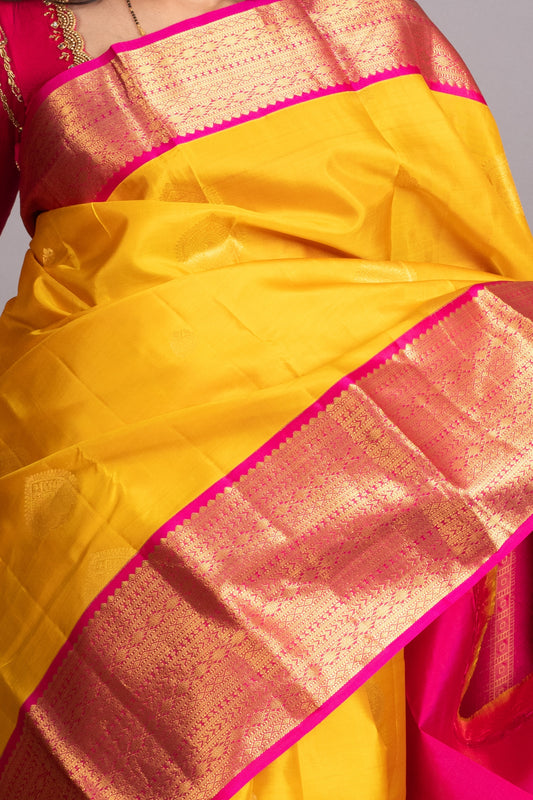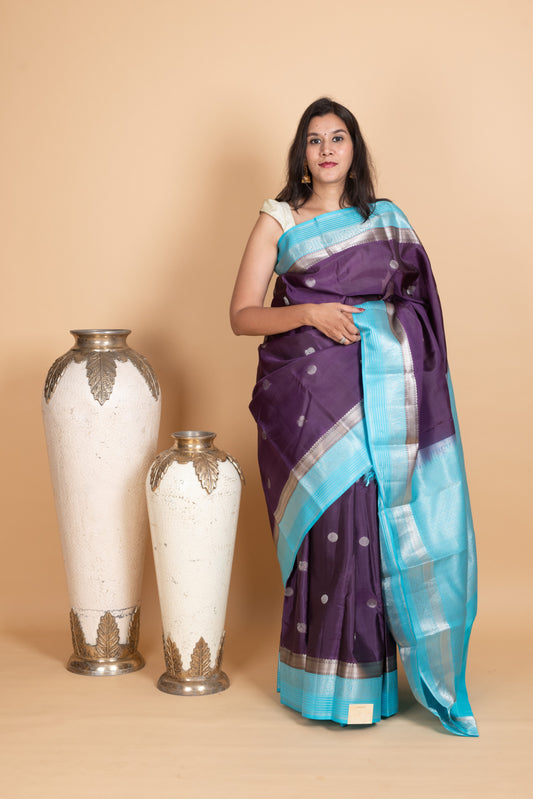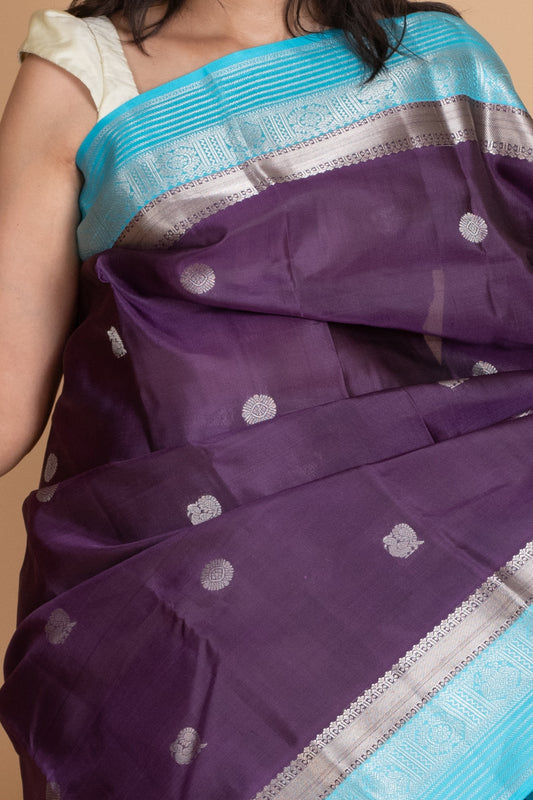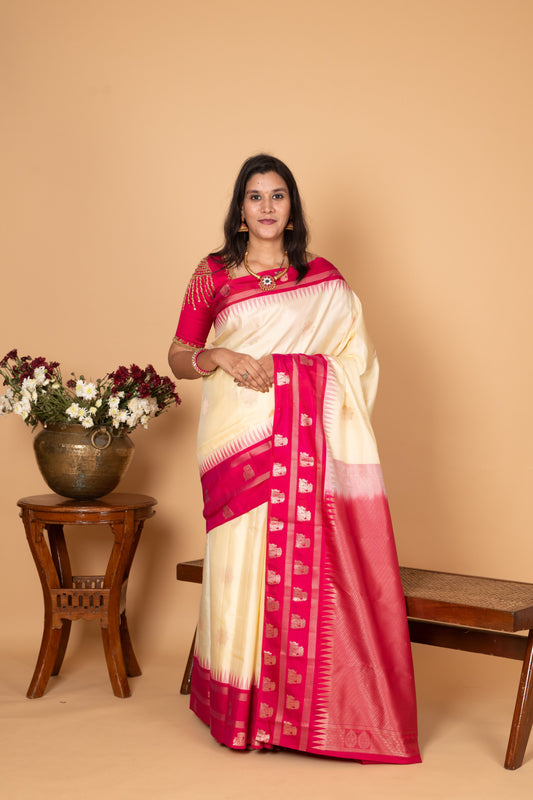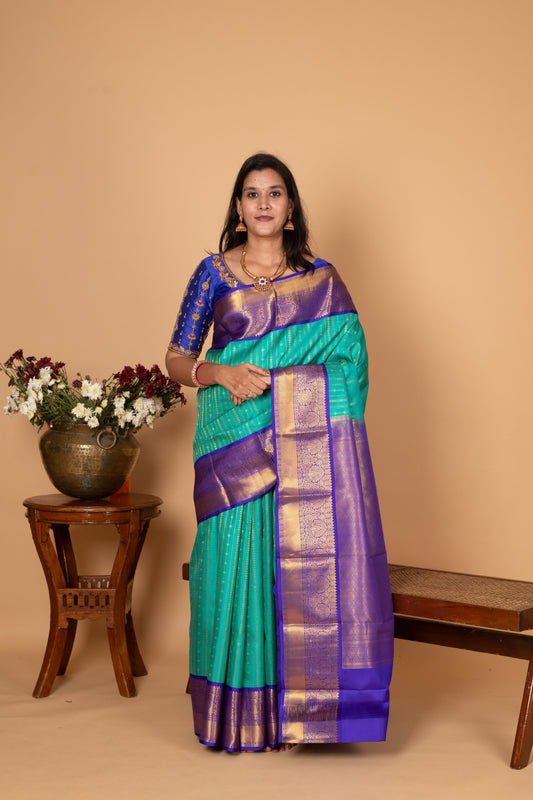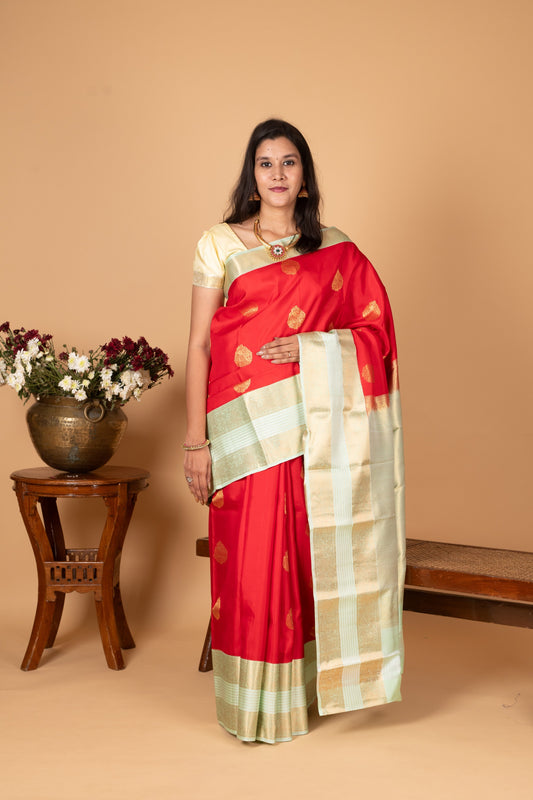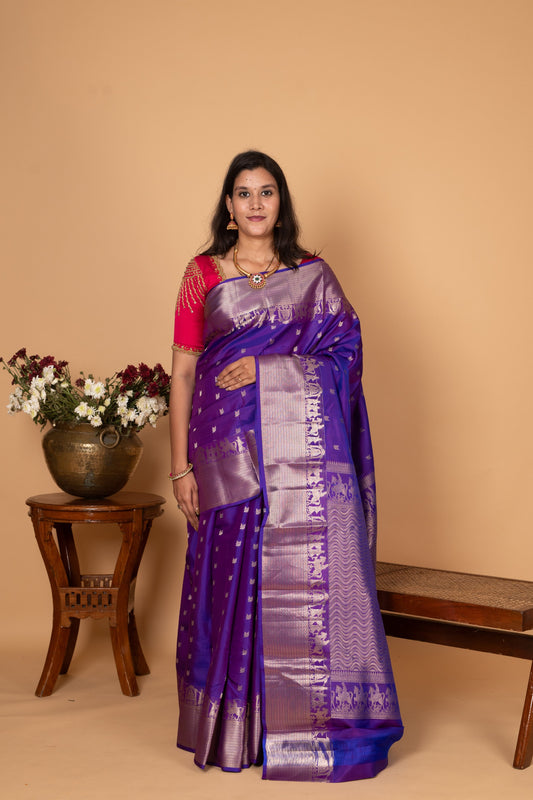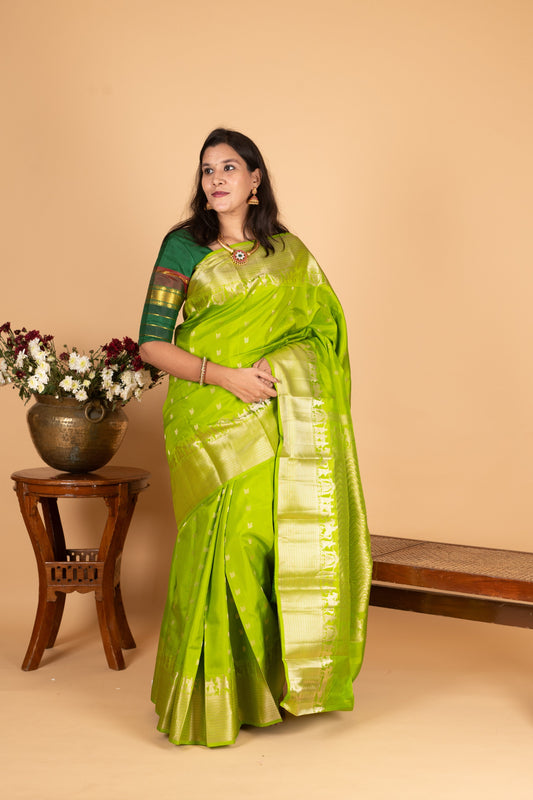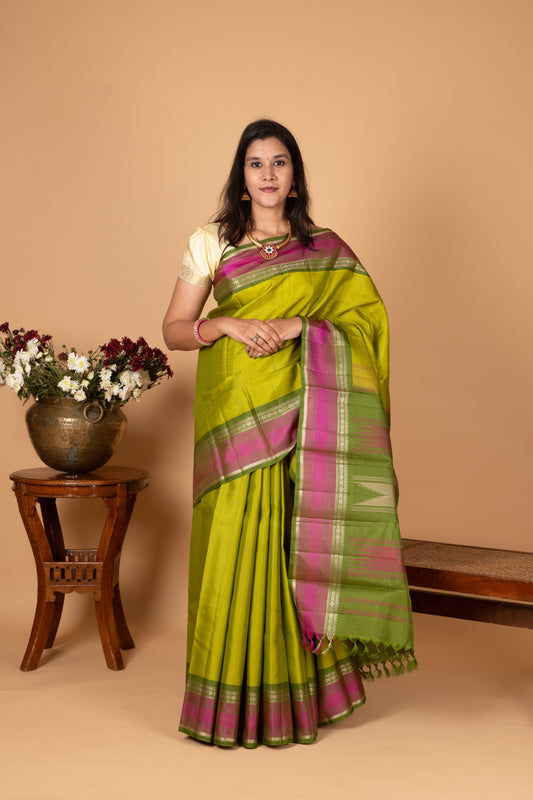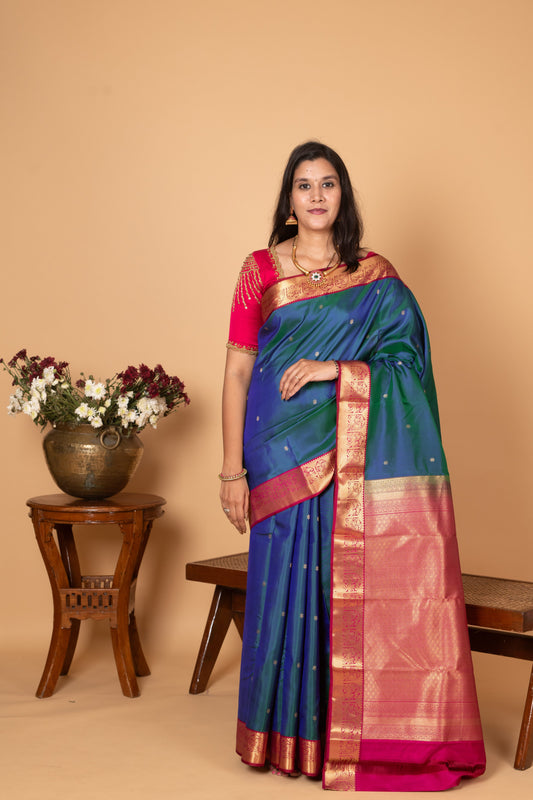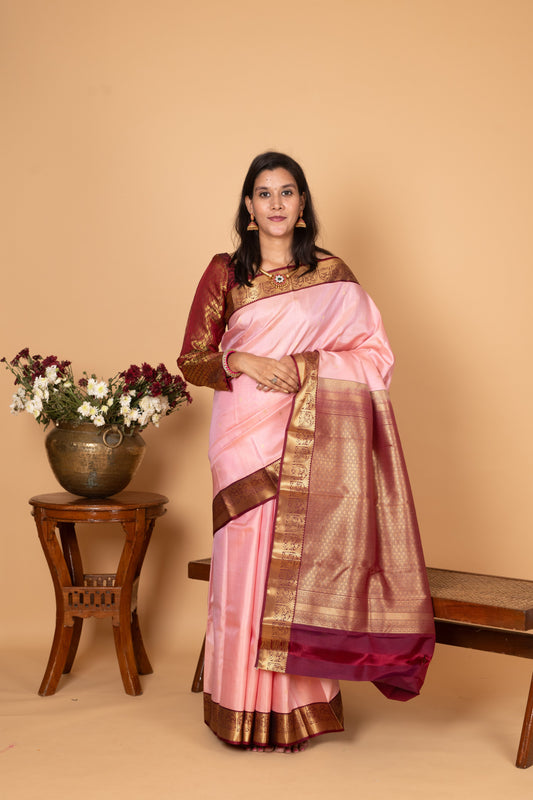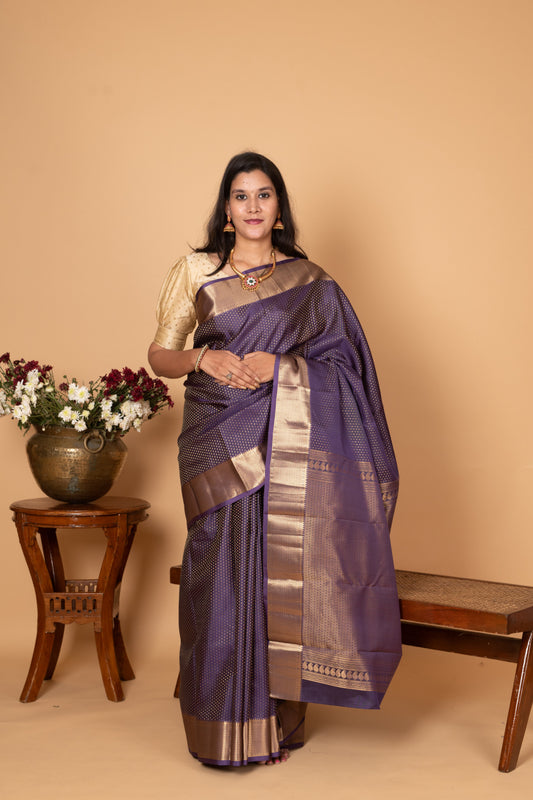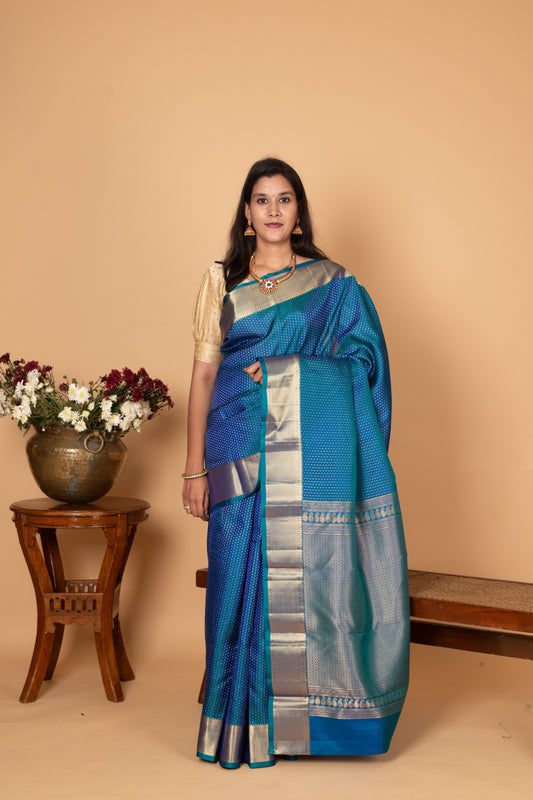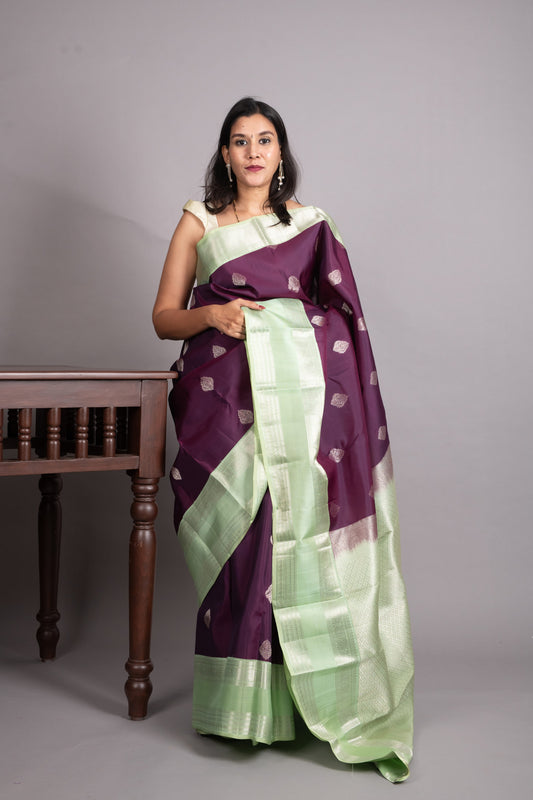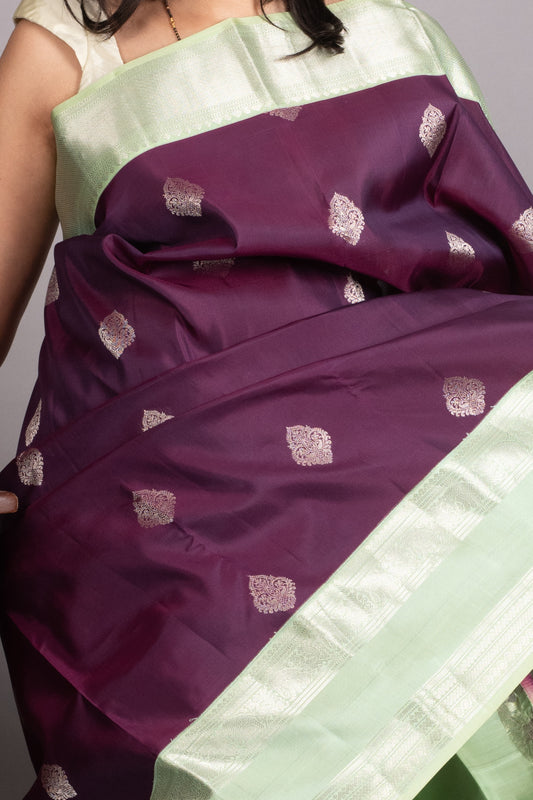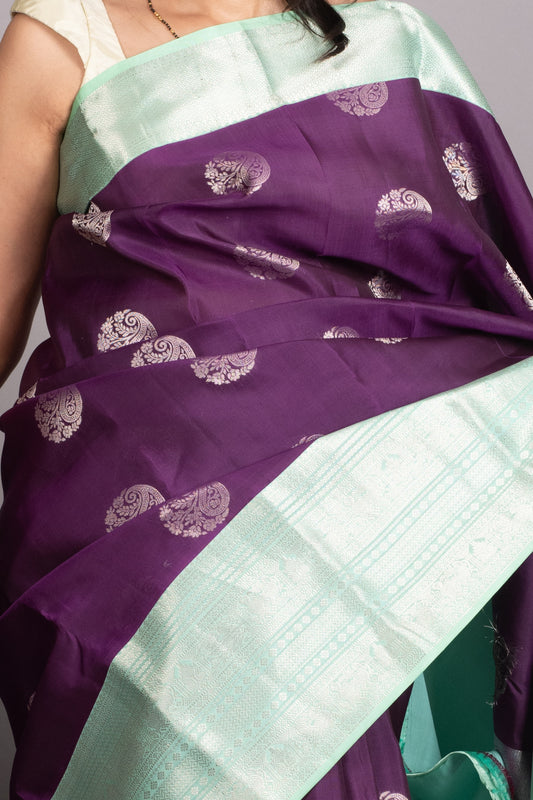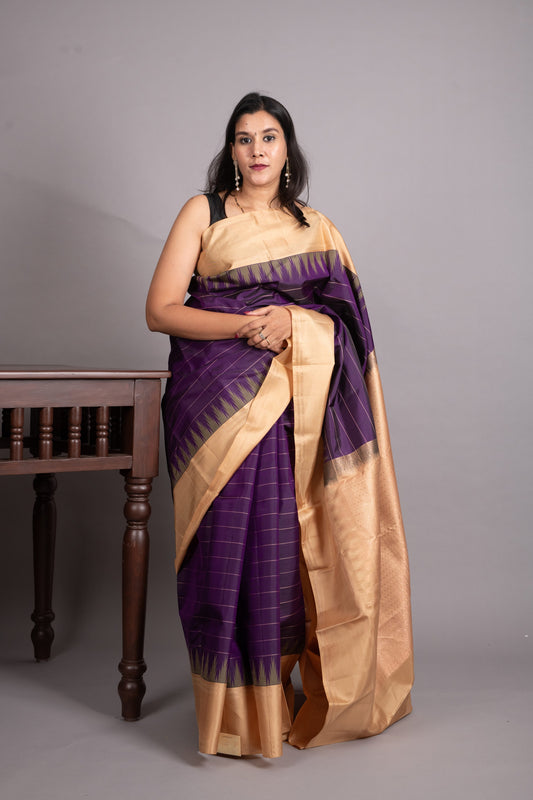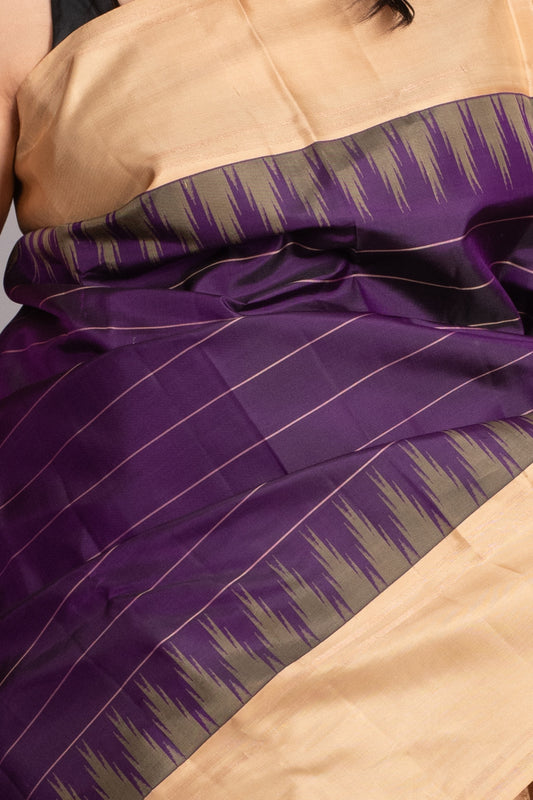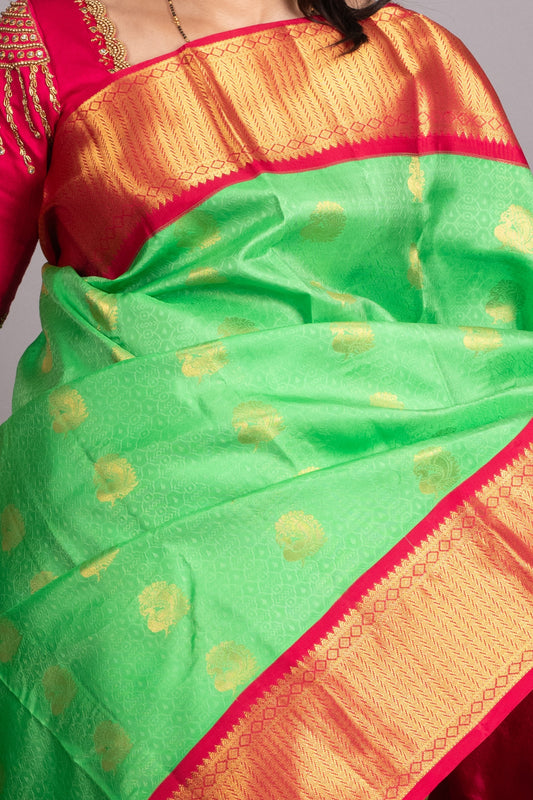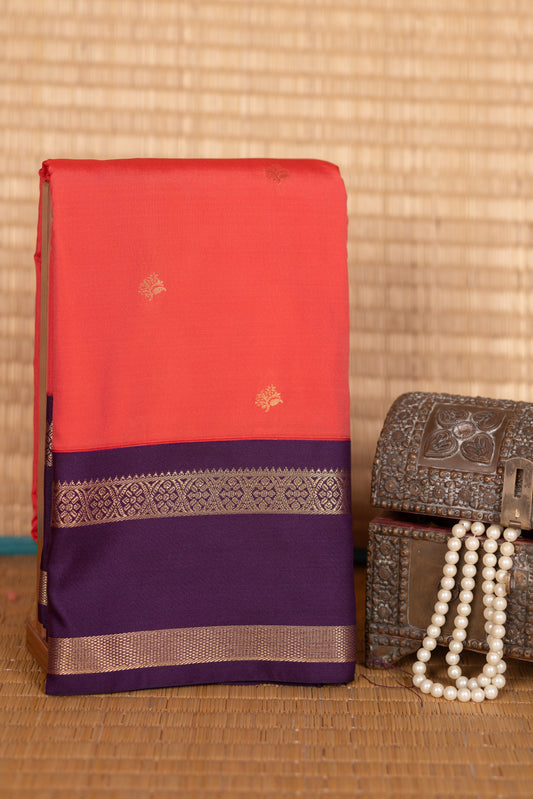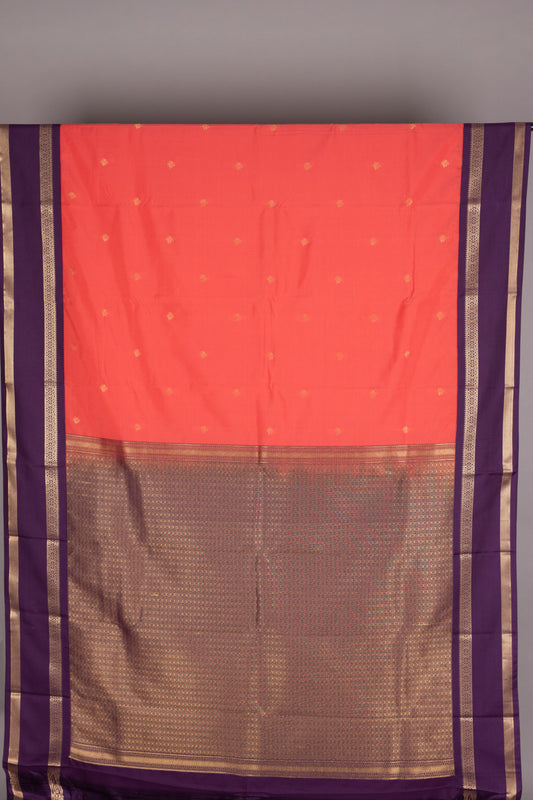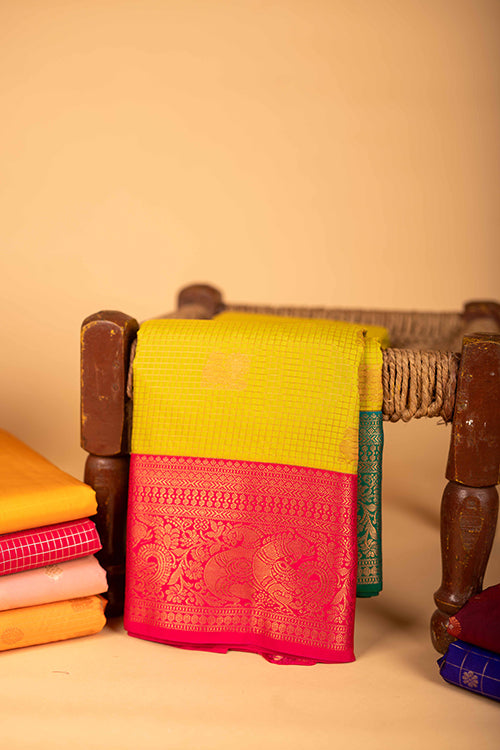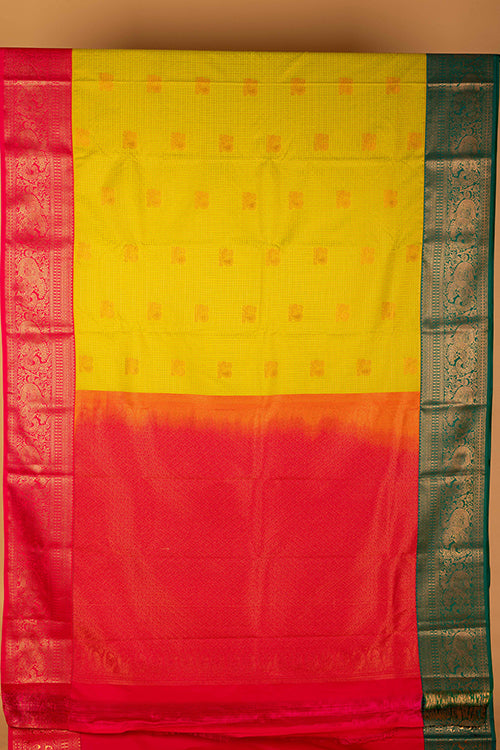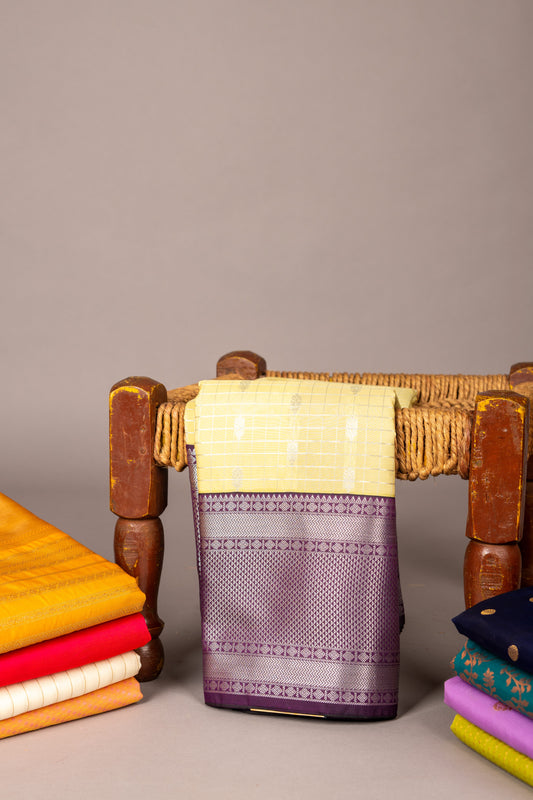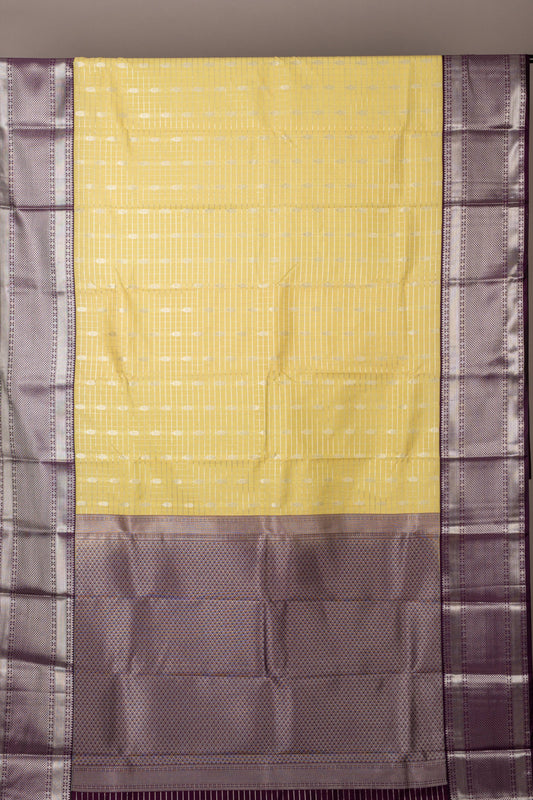Handloom silk sarees are exquisite works of art shaped by skillful human hands and soulful tradition. Each saree, woven with the warmth of human hands and enriched by opulent cultural heritage, is an unprecedented masterpiece. Unlike their machine-made counterparts, genuine handloom silk sarees carry a soul, each thread echoing generations of artistry, dedication, and ancient wisdom. In modern times, many machine-made silk sarees are labeled and marketed as handloom and sold at premium prices, misleading genuine buyers.
Silk Weaving in India
Saree weaving is a time-honored craft deeply woven into the fabric of Indian culture. More than just attire, a saree embodies tradition, grace, and rich heritage. Over the centuries, it has gracefully evolved, embracing modern trends while staying true to its cultural roots. India is one of the largest producers of silk in the world and it produces all four major types of silk: Mulberry, Tussar, Eri, and Muga. Thanks to diverse natural resources and rich cultural influences, every region in India has added its unique touch to the legacy of Indian silk.
In India, saree weaving is primarily done through two techniques: handloom and powerloom. Both methods typically start the same way - with the harvesting of pure silk yarn, followed by dyeing the threads in rich, vibrant colors to prepare them for weaving. The magic happens in the loom only. A loom is a device used to entwine threads and create fabric through the process of weaving. It holds the warp threads (the vertical ones) under tension, allowing the weft thread (the horizontal one) to pass over and under to create cloth. Looms come in different forms starting from age-old wooden frames to modern automated machines.

Handloom
A handloom is a manual machine that relies solely on human effort, controlled entirely by the hands and feet of the weavers. It doesn’t use electricity or motors. The artisan controls every part of the process, from the motion of the threads to the creation of patterns. Handlooms allow for high craftsmanship, making each piece unique and slightly irregular, which is a mark of its authenticity.
After carefully sourcing and finishing dyeing, the weavers stretch and arrange the yarn on a traditional handloom. This process is called Warp preparation. Then the weaver places the weft yarn in the shuttle and starts weaving. A shuttle is a tool used to carry the weft yarn (the horizontal thread) back and forth through the warp threads (the vertical threads) on the loom.
Using foot pedals and hand movements, artisans begin weaving. Every design, motif and border is manually controlled. There are different types of handloom weaving like Pit loom, Frame loom, and Paddle loom. In any type, weaving a single saree can take anywhere from a few days to several weeks, depending on the complexity.
Power Loom
A power loom is a mechanized loom that runs on electricity and is used to weave fabric at high speed. It works by automating the weaving process through electrically powered mechanisms. Powerloom weaving is faster, more uniform, and cost-effective, making it ideal for large-scale manufacturing. However, it often sacrifices the intricate detailing and craftsmanship found in handloom textiles. Additionally, power looms consume more energy and contribute to a larger carbon footprint, making them less sustainable than their handloom counterparts.
Why Handloom Sarees Are Truly Special
A handloom silk saree is not simply a fabric; it’s an art drawn with yarn. Every weave carries the breath of the weaver, the soul of the region, and the essence of time-honored techniques passed down over centuries. From the lustrous Kanchipuram silks of Tamil Nadu to the ethereal Muga from Assam, each piece reflects the character of its origin. The process of creating this beautiful art is an intricate, deliberate and deeply human thing.
Every handloom silk saree reflects the knowledge and skill of the weaver honed over decades, often passed down through generations within the family. These sarees embody the weaver’s deep understanding of patterns, textures, and techniques, along with an intuitive grasp of design that can’t be replicated by machines.
The remarkable aspect of a handloom silk saree is its inherent uniqueness. No matter how skilled or experienced the weaver may be, no two handloom sarees can ever be exactly alike—not even by design. Each saree is a one-of-a-kind creation, shaped by the weaver’s rhythm, emotion, and subtle variations in hand tension and technique. This organic imperfection is what gives handloom its soul. It’s not mass-produced—it’s personally woven, thoughtfully crafted, and infused with the individuality of its maker.

Another strand that sets handloom silk apart is not just its unmatched texture and intricate patterns, but the humanity behind it. The small imperfections, the rich detailing, the way the fabric drapes—it all speaks of authenticity.
Handloom weaving is a remarkably eco-friendly craft. Unlike mechanized production, which relies heavily on electricity and fossil fuels, handloom weaving is largely manual, significantly reducing energy consumption.
Choosing handloom silk isn't just a style statement; it’s a celebration of heritage, a tribute to craftsmanship, and a step toward preserving an irreplaceable art form while supporting an eco-friendly meaningful future.
How to Identify if it’s a Handloom Saree
Spotting a handloom silk saree is all about noticing the subtle signs of craftsmanship and authenticity. Here's what to look for:
- Soft and Breathable Texture: Genuine handloom silk tends to feel softer, more luxurious and more breathable than its powerloom counterpart. Handloom sarees are more flowy as they are loosely woven than the power loom sarees which are tightened so closely by the machines.
- Slight Imperfections: Handloom sarees often have minor irregularities, like uneven threads or minor variations in the weave. Unlike power loom sarees which are woven in a short time, Handloom sarees take several days to finish especially the bridal collections which take weeks to complete. While examining closely, the handloom sarees bear indiscernible knots at the places where the weaver has paused. Sometimes, the motifs can be seen in irregular sizes. These aren't flaws; they’re the marks of human hands at work.
- Detailed Designs and Unique Patterns: Crafted with richness and depth of detail, handloom silk sarees feature patterns that are usually more intricate and showcase the painstaking manual process.
- The Selvedge and minor pinholes: The selvedge on a handloom silk saree is tightly woven and neatly finished, unlike the power looms. The weaver carefully stretches the completed section and secures both ends of the weft with tiny pins to prevent wrinkles during the process. This creates tiny unnoticeable pinholes that mark the handiwork behind every saree.
- No Mechanical Repetition: Each piece is slightly different from the next, reflecting the weaver’s personal touch and the absence of robotic uniformity. No two handloom sarees are ever identical - not even when crafted from the same design. Each piece carries its own properties and designs.
- Double-Sided Design: Flip the saree. In handloom pieces, the design is often visible on both sides, though slightly lighter on the reverse.
-
Certification Tags: Look for tags like the “Handloom Mark” or Silk Mark India, which authenticate the saree’s origin and purity.

The Revival of Handloom Silk Sarees
In recent years, handloom textiles have made a stunning comeback, celebrated for their artistry and eco-conscious appeal. Fashion lovers and mindful consumers are once again enchanted by handloom silk sarees—prized for their exquisite craftsmanship and the rich heritage embedded in every thread. This renewed interest is not only reviving age-old traditions but also empowering weaving communities, helping their timeless skills thrive in the modern world.
What Makes Priyangaa the Best for Handloom Silk Sarees
The house of Priyangaa stands out because we bring you handloom silk sarees that are genuine, beautiful, and crafted with care. Each saree supports skilled weavers and keeps the tradition alive. With Priyangaa, you get quality you can trust and a piece of heritage you can proudly wear.

